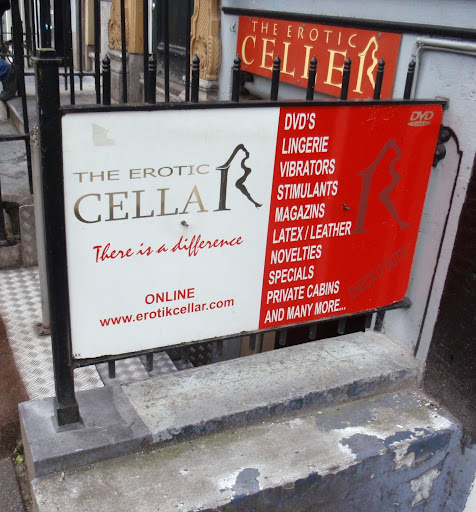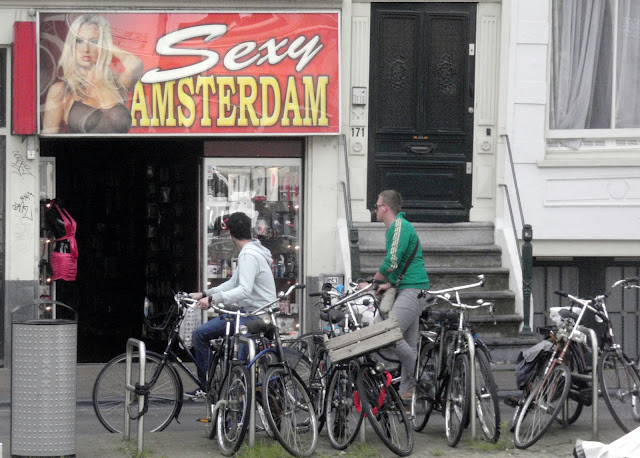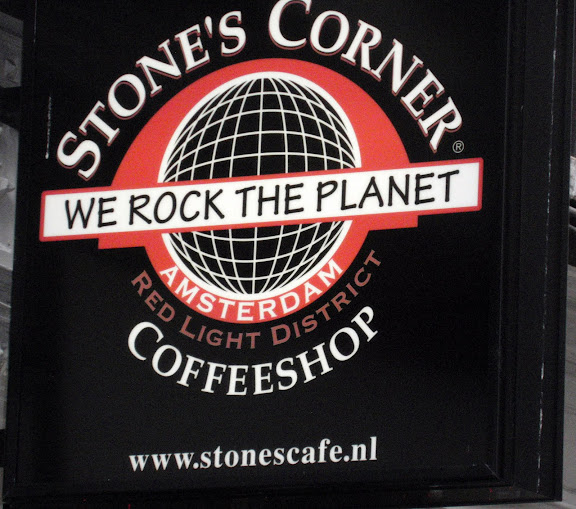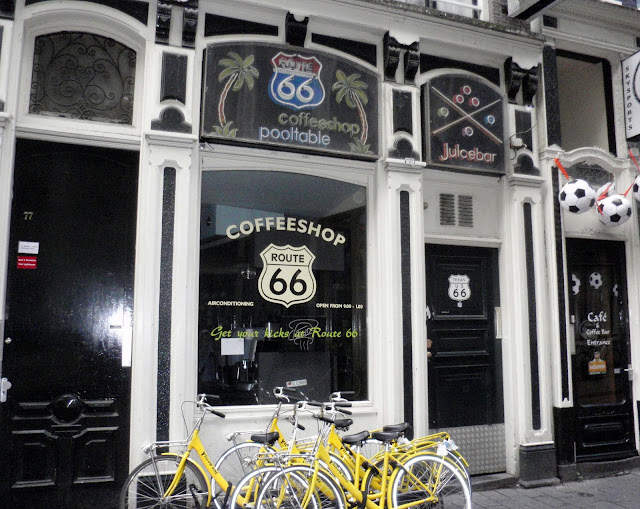Amsterdam: For Dope and Diversions, You Gotta Love the Dutch
I’m from California, but I don’t smoke marijuana—dope, grass, mary-jane, pot, ganja—whatever you choose to call it. So, when I hauled my tired body out of bed at 3:30 a.m. to catch a 7:45 flight from SFO to Amsterdam, it wasn’t for the drugs. I was thinking canals, not cannabis; Anne Frank, Van Gogh, and Rijksmuseum, not reefers.
Still, I’d be lying if I didn’t admit I found Amsterdam’s wild side fascinating. We’d sat in cramped seats for twelve hours, and upon touching down at Schiphol airport, we needed exercise, I was so tired I was hallucinating—a good mindset to wander the red light district. De Wallen, as the area is known, has become one of the city’s largest tourist attractions. I didn’t worry about mayhem or mugging. The streets of the Dutch capital felt tame and safe. During daylight hours, they were filled with gawkers. I can’t speak to their ambiance after the sun went down.

Couldn’t bring ourselves to enter and browse.

Bicycles and erotica.
Amsterdam is a city of contrasts. Anything goes, but the Netherlands, and Amsterdam in particular, may have conflicted attitudes about drugs and sex. The surface façade is live-and-let-live, but the Great Pot Debate makes me wonder if there isn’t serious ambivalence simmering below the surface.
In the 1970s, against a backdrop of indulgence, coffeeshops (one word) sprang up for the purpose of keeping hard and soft drugs separate.
One of the first things a U.S. tourist learns, assuming they weren’t already aware of it, is that coffeeshops aren’t where you head for a good cup of Joe. These establishments sell food and soft drinks but not alcohol or hard drugs, and their coffee tastes like refinery sludge. Their claim to fame is the marijuana you can order as bold as Clint Eastwood sidling up to a bar in an old spaghetti western.
The selling of cannabis is illegal, but not punishable. The law was not enforced as long as proprietors followed a few simple rules: No hard drug sales on the premises, no sale to minors (under 18), no sale of greater than five grams, and no advertising. The advertising prohibition hardly qualified as a rule since it was ignored.

Cannabis by any other name is still…

Stoners welcome.

Get your kicks on Route 66.
In 2011, the Dutch government announced that by the end of the year, the country's marijuana-dispensing coffeeshops would close to tourists and begin operating like private clubs, open only to adult Dutch citizens. Debate raged over the impact on tourism. One side argued coffeeshops were part of the culture, and even tourists who were high, spent a lot of money. Besides, the ban could encourage greater problems if enterprising locals began acting as middleman between coffeeshops, no longer allowed to sell to visitors, and the tourists. The other side insisted rowdy tourists were a public nuisance, and the Netherlands didn’t need to induce foreigners with a promise of legal drugs.

Gawkers and window shoppers.
Before the ban went into effect the Council of State ruled that the new ordinance couldn’t ban something that was already forbidden, even if the original prohibition was never enforced. That gave tourists a bit of breathing (or smoking) room while discussions continued and politicians considered alternatives. The issue disappeared like a whiff of smoke until May 2012. During a period of further reflection, it was decided to go forward with the ban.
Fast forward to January 2013. Tourists may find little has changed. Foreign visitors are still invited into coffeeshops and can buy and smoke marijuana in Amsterdam. Mayor Eberhard van der Laan sent a letter to the current government indicating, “It has been decided that Amsterdam law enforcement authorities will not attach any priority to enforcing the local residence requirement."
I make no promises, but it appears that Dutch tolerance was victorious.
For my husband and me, it was time to leave the red-light district, enjoy a good night’s sleep, and then concentrate on things a bit more cerebral. Tomorrow we check out the museums.
A New Read
On the flight to Amsterdam I read The Diary of Anne Frank and 50 Shades of Gray. If nothing else, my taste could be called eclectic. We planned to visit the Anne Frank Museum and I wanted to reread a book that had a profound impact when I read it as a high school student. 50 Shades was a curiosity. As a writer, I wanted to see what the hype was about. Reading it on Kindle, I didn’t have to hide the cover.
After we returned to Northern California, I continued writing my own novel, PILZ. It is currently published and available in paperback and Kindle versions on Amazon. PILZ is crime fiction. The story drags you into the underbelly of the medical profession where doctors sell prescriptions and conspire with drug dealers in a tale of blackmail, murder, and betrayal. The spelling PILZ refers to prescription pills used for recreational purposes.
Nothing would give me a greater high than boarding my next plane and seeing someone reading PILZ.
Julie Albrecht Royce, Travel Adventures Editor, is the author of Traveling Michigan's Sunset Coast and Traveling Michigan's Thumb, both published by Thunder Bay Press. She writes a monthly column for Wandering Educators.
On her blog, Julie is currently writing two weekly series.
On Mondays, she posts in her series entitled, "Ugly Shoes and Boomer Do Europe."
This series captures the humor and adventure of her rail trip from Amsterdam to Budapest and then return river cruise back to Amsterdam.
On Thursdays, Julie writes about PILZ, the legal thriller novel she has written.
Log on to www.jkroyce.com/blog to follow along.
All photos courtesy and copyright Julie and Bob Royce
-

- Log in to post comments




















